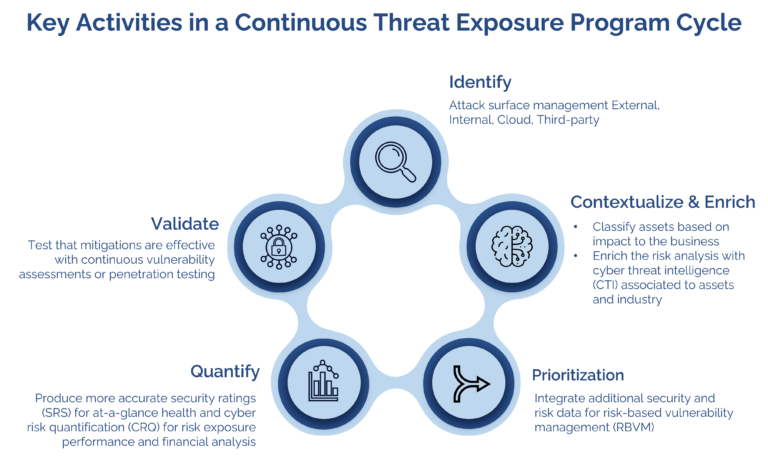
Continuous Threat Exposure Management – The 6 Aspects You’ll Need to Address Continuous Threat Exposure Management (CTEM) is an…
"This is an excellent starting point for any organization that wants to get serious about their cyber risk management. The system has the capability to grow as you become more sophisticated in your use"
IT Director
Services Industry
Organizations seek tools to assess the cybersecurity posture of their organizations and their vendors. They do this for a variety of reasons- third-party/vendor risk management, diligence on merger and acquisition targets, understanding their own external cybersecurity posture – to name a few. BitSight and SecurityScorecard are two original vendors in the category of security ratings and vendor risk management; each offering unique insights into an organization’s cybersecurity effectiveness.
This article explores some of the differences between BitSight and SecurityScorecard, shedding light on their methodologies, features, and how they cater to the distinct needs of businesses. There are also first-hand BitSight v. SecurityScorecard reddit discussions that you can research.
The outcome that security ratings providers like BitSight, SecurityScorecard and alternative BitSight competitor providers is to rate an organization based on externally available information about the company’s IT assets. This is largely based on passive and non-intrusive assessments in addition to collecting external information related to IT assets like network sensor discovery, data from participating internet service providers and other open-source intelligence (OSINT) data sources. This information would then be analyzed and distilled into a cybersecurity rating or risk score report. Either a credit score style numeric rating (BitSight Score Range: 250-900) or an alphabet letter grade (SecurityScorecard Range: A-F).
This information helps with the use cases that security ratings are used for and additionally the data can be used for benchmarking against peers, industry and competitors. This helps organizations get a comparison based on their own security rating. Even the benchmark comparisons will show a difference between BitSight and SecurityScorecard as their two different methodologies will have an impact on each published result.
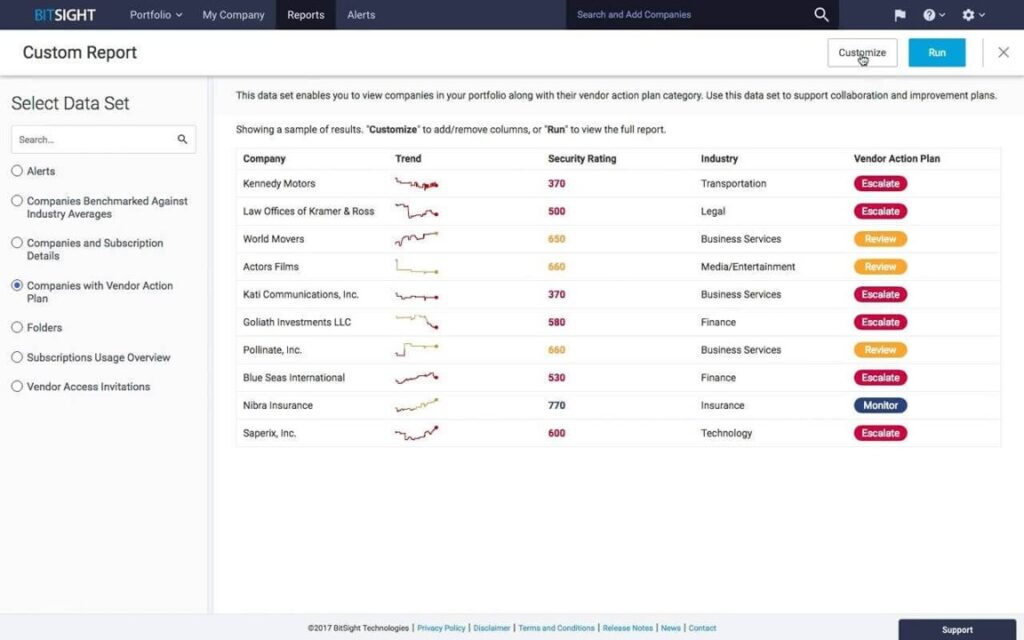
BitSight Dashboard UI, source: BitSight.com
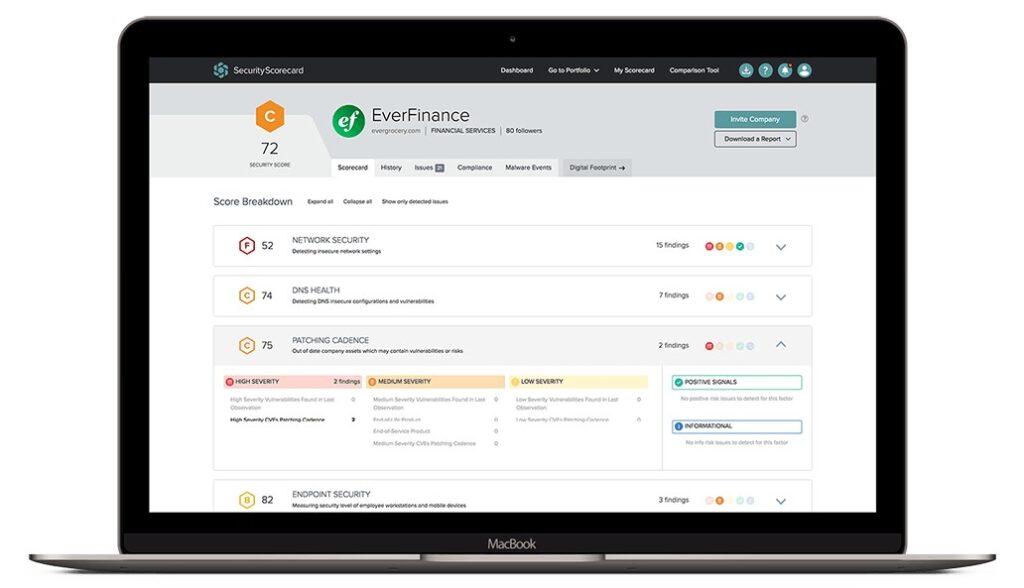
SecurityScorecard Dashboard UI, source: securityscorecard.com
Additional Resources
Cybersecurity rating scale explained
What are security ratings used for?
How are security ratings created?
What is a good cybersecurity rating?
How do you improve your security rating?
Is it easy to switch security ratings providers?
Why is my security rating wrong?
What Kind of Company is BitSight?
Select What are the 5 C’s of Cybersecurity?
The Evolution of Cybersecurity Ratings and How They Can Boost Risk Visibility

BitSight and SecurityScorecard differ in their methodologies, but both are considered to be “real-time” to achieve continuous monitoring. BitSight collects data from various sources, including externally and publicly observable data points like indicators of compromise, user behavior, network sensor or sinkhole monitoring, and relationships with ISP providers.
BitSight formulates its ratings by gathering security information from billions of stored data points and events online, as described on their website. The data encompasses:
This data is applied to a company’s network footprint and then processed through an algorithm that evaluates the data based on severity, frequency, duration, and confidence indicators. The result is an overall rating of an organization’s security performance, measured along a cybersecurity risk rating scale ranging from 250 to 900, with higher scores indicating better cybersecurity performance.
SecurityScorecard, on the other hand, also gathers data from external sources but emphasizes publicly accessible information, focusing on factors like DNS health and patching cadence. SecurityScorecard can also directly scan organizations to help reduce the misattributions of IT asset ownerships to organizations.
SecurityScorecard evaluates an organization’s cybersecurity posture across across ten groups of risk factors, including DNS health, IP reputation, web application security, network security, leaked information, hacker chatter, endpoint security, and patching cadence, as described on their website.
They take into account all the external-facing discoverable assets of an organization, the issues associated with those assets, and the severity of the threats that were found in order to determine a score for each organization. The scores are graded and measured along a cybersecurity risk rating scale on an alpha scale of A-F.
FortifyData, a BitSight competitor, when the focus is narrowed on just the security rating, provides a standard security rating scale is similar to a credit score. The security rating scale we employ ranges from 350 –900 with explanations below.
FortifyData enables clients to reflect the context of their business and cyber risk in the security rating. Clients can classify identified assets by operational criticality (also allowing for identification of data types on devices) and respond to risks identified by recording the compensating control(s) in place to reduce the likelihood of threats occurring. This produces the most accurate security rating risk representation by the published security rating score.
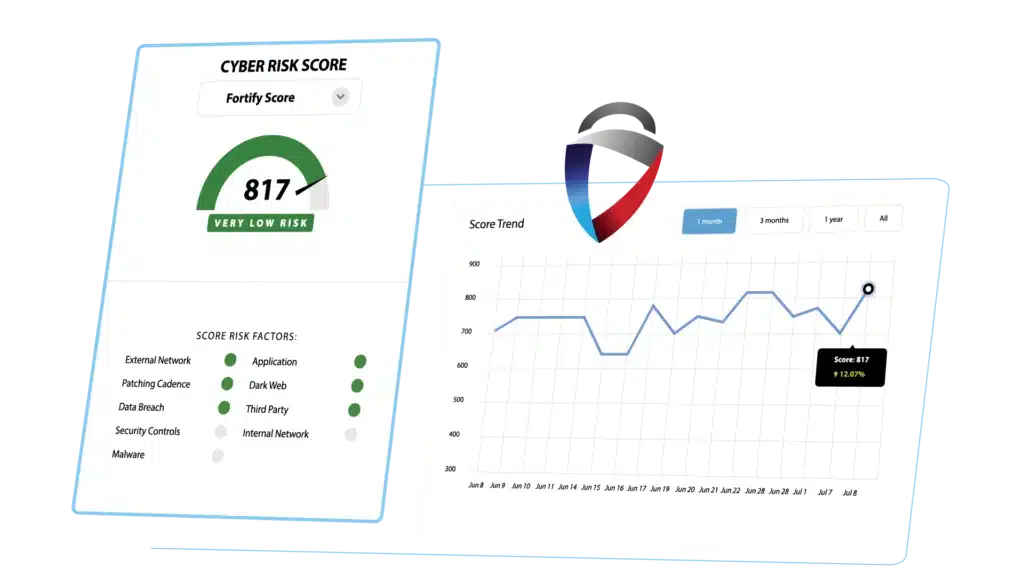
FortifyData enables clients to create additional, configurable security rating risk models to produce security ratings unique to their cyber risk appetite and threat profile. The weightings of the factors can be adjusted to help further tune the risk representation of a company as ‘one-size-fits-all’ rarely works effectively.
The FortifyData security rating score methodology is publicly available which details the specific cyber risk and vulnerability factors that go into the security rating as well as the weightings. We are the only security rating provider with a patent pending on their configurable security rating risk rating models which allows clients to create additional security rating models where you can define the weighting of the factor’s effect on the security rating scale.
Understanding and managing cybersecurity risks is paramount and security ratings services like SecurityScorecard ratings have emerged as a pivotal tool in this endeavor, offering insights into an organization’s cybersecurity posture and that of their third-party associates.
Some of the use cases that SecurityScorecard ratings and other BitSight competitors address are:
Further answers can be found on our What are Security Ratings Used For? blog
SecurityScorecard is a cybersecurity company that provides security ratings and risk assessment services. It specializes in evaluating and monitoring the cybersecurity posture of organizations and their vendors. SecurityScorecard offers a range of products and solutions that help businesses assess and manage their cybersecurity risks effectively.
Overall, SecurityScorecard is a resource for organizations looking to enhance their cybersecurity posture, assess vendor risks, and proactively address cybersecurity threats. It offers a data-driven and objective approach to cybersecurity assessment and management.

SecurityScorecard score, source: securityscorecard.com
Is there a SecurityScorecard Gartner Magic Quadrant? Gartner, Forrester and other independent analysts cover the security rating services category. These analyst firms are known for their comprehensive analysis, and each offers valuable insights into various security rating providers. They assess these providers based on their capabilities and provide a comprehensive view of the strengths and weaknesses of each.
Gartner has identified security ratings services as a component of third-party risk management according to Top 10 Security Projects for 2019. Largely the result of more interdependent relationships among companies, security ratings services can be an informative tool to help understand the external risk – absent any vendor provided information about internal security controls and effectiveness – to help inform supplier relationship decisions.
Forrester continues to evaluate security ratings services in a research cadence of every few years. According to Forrester’s publicly available evaluative research calendar, they are preparing to publish an update on Cybersecurity Ratings Services to their originally published Forrester New Wave: Cybersecurity Risk Ratings Platforms Q1 2021.
What is the alternative to BitSight security ratings platform? Or SecurityScorecard? While these security ratings providers helped define the market when nothing like this existed before, advancements have been made in methodologies leveraging newer technologies by newer security ratings providers that are competitors to BitSight and SecurityScorecard that can yield improved accuracy and representation of risk levels.
FortifyData is an alternative to BitSight security ratings platform, or SecurityScorecard, that provides a more trusted and accurate security rating according to clients. FortifyData is an automated cybersecurity risk management platform that produces a security rating as a result of conducting more comprehensive cyber risk management assessments including external, internal, cloud and controls assessments.
The FortifyData security rating is based on weekly direct and comprehensive, but non-intrusive, assessments of external IT assets which are confirmed by the client.
What other security ratings don’t provide but FortifyData does, is the ability to contextualize the identified assets based on business impact and allows for likelihood of risk scenario adjustments to produce a contextualized security rating. This same approach is conducted for enterprise risk management and third-party risk management.
Additionally, FortifyData provides the option to also conduct internal risk assessments to add to the cyber security rating, so you truly get a comprehensive security rating based on external and internal information.
This alternative security ratings approach results in a more accurate and up-to-date security rating that is trusted.
BitSight and SecurityScorecard offer security rating tools for organizations to assess their cybersecurity readiness. While both platforms share similarities in data collection and industry benchmarking, they differ in their methodologies, scoring methods, and customization options. Organizations must consider their unique needs, industry context, and the granularity of insights required when choosing between the two platforms. Understanding these differences empowers organizations to make an informed decision about the platform that aligns best with their cybersecurity strategy and goals.

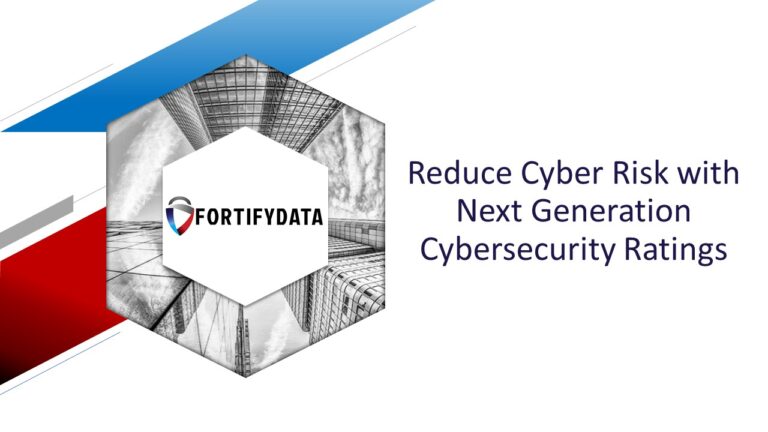
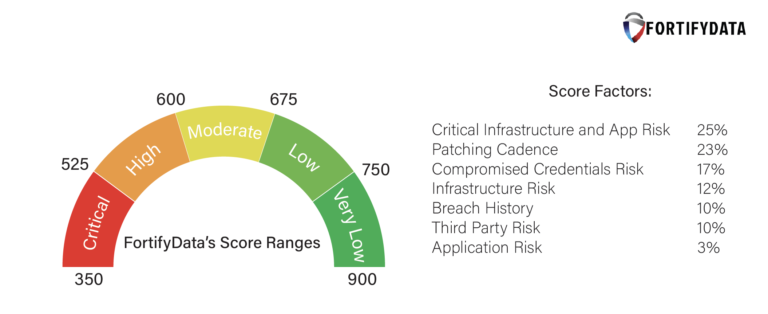
| Cookie | Duration | Description |
|---|---|---|
| cookielawinfo-checkbox-analytics | 11 months | This cookie is set by GDPR Cookie Consent plugin. The cookie is used to store the user consent for the cookies in the category "Analytics". |
| cookielawinfo-checkbox-functional | 11 months | The cookie is set by GDPR cookie consent to record the user consent for the cookies in the category "Functional". |
| cookielawinfo-checkbox-necessary | 11 months | This cookie is set by GDPR Cookie Consent plugin. The cookies is used to store the user consent for the cookies in the category "Necessary". |
| cookielawinfo-checkbox-others | 11 months | This cookie is set by GDPR Cookie Consent plugin. The cookie is used to store the user consent for the cookies in the category "Other. |
| cookielawinfo-checkbox-performance | 11 months | This cookie is set by GDPR Cookie Consent plugin. The cookie is used to store the user consent for the cookies in the category "Performance". |
| viewed_cookie_policy | 11 months | The cookie is set by the GDPR Cookie Consent plugin and is used to store whether or not user has consented to the use of cookies. It does not store any personal data. |